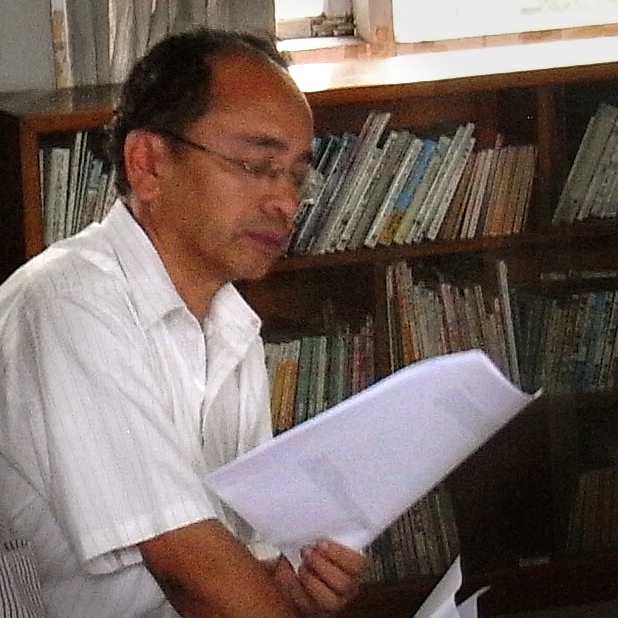Sotomura, Ataru (外村中). Mt. Sumeru 須彌山: Source Manual for Iconographic Research on the Buddhist Universe. Nalanda-Sriwijaya Centre Working Paper No.6. Singapore: Nalanda-Sriwijaya Centre, ISEAS, 2011. [PDF]
Delhey, Textual Sources of the Mañjuśriyamūlakalpa (2012)
Martin Delhey. ‘The Textual Sources of the Mañjuśriyamūlakalpa (Mañjuśrīmūlakalpa), With Special Reference to Its Early Nepalese Witness NGMPP A39/4′. Journal of the Nepal Research Centre* vol.14, 2012, pp.55–75. ISSN 2091-0401 [downloadable with restricted access at academia.edu].
Continue reading “Delhey, Textual Sources of the Mañjuśriyamūlakalpa (2012)”
Tachikawa, Essays in Buddhist Theology (2012)
Tachikawa, Musashi. Essays in Buddhist Theology. Delhi: Motilal Banarsidass, November 2012. ISBN-13: 978-8120835405. INR 500. [official]
A translation of Budda no tetsugaku (1998) [corrected].
Cover note
“Buddhism does not recognize a concept of the existence of God (theos) such as found in Christianity, but here theos is not used to refer only to an absolute deity like the Christian god. By “theology,” the author means the systematic delineation of the confrontation with the condition of the times while carrying on the engagement between the divine and oneself.
Continue reading “Tachikawa, Essays in Buddhist Theology (2012)”
Liu, On the Sanskrit Version of Dharmadhātustava (2012)
Zhen Liu (刘震). ‘On the Sanskrit Version of Dharmadhātustava‘. Paper presented at Buddhajayanti: The Celebration of 2600 Years of Buddha’s Enlightenment, Mahachulalongkorn University, Bangkok, 2012. [PDF]
Dr. Zhen Liu tracks down the earliest dateable source for the Dharmadhātustava — a Chinese translation of preaching attributed to Kṣitigarbha, surviving in a unique Dunhuang manuscript — and concludes: “it is obvious that before the middle of the eighth century it was not thought that Nāgārjuna authored the text” (p.10).
Continue reading “Liu, On the Sanskrit Version of Dharmadhātustava (2012)”
Ōtsuka, *Formation of Early Indian Tantric Buddhism (2013)
大塚 伸夫 『インド初期密教成立過程の研究』 春秋社 (2013/1/31) 23,100円
Ōtsuka, Nobuo. Indo shoki mikkyō seiritsu katei no kenkyū (*Studies on the Formation Process of Early Indian Tantric Buddhism). Tokyo: Shunjūsha, January 31, 2013. 1100 pp. ISBN-13: 978-4393113110 [official site unofficial summary at Taishō U.]
Tanaka, Samājasādhanavyavastholī 4 (2012)
Chandrasekhar, Pala-Period Buddha Images (2004)
Chandrasekhar, Chaya. Pāla-Period Buddha Images: their hands, hand gestures, and hand-held attributes. PhD Dissertation, Ohio State University, 2004. xvi+375 pp. [official site / PDF (779.3 MB)]
From the Abstract
This study identifies and classifies the Buddha images of the Pāla period (ca. eighth-twelfth centuries) of eastern India and Bangladesh. Specifically, the study examines the number of hands—whether a single pair or multiple pairs—hand gestures, and hand-held attributes of the Buddha images, and analyzes these elements in relation to the essential teachings of Mahāyāna and Vajrayāna Buddhism. […]
About 963 Buddha images among the known Pāla artistic corpus serve as the primary documents for the study.
Lee, Defining Buddhist art in Bengal (2009)
Lee, Eun-Su. On defining Buddhist art in Bengal: the Dhaka region. PhD Dissertation, University of Texas at Austin, May 2009. 498 pp. [official site / PDF (224.3 MB)]
From the Abstract
This dissertation addresses the significance of regional developments in Indian art, focusing on the Buddhist art tradition of the Dhaka region in East Bengal from approximately the seventh to twelfth century CE.

Min Bahadur Shakya, 1951-2012
Johnson, Candrakīrti’s Saṃskṛtārthapratiṣedha (2012)
Johnson, Dennis. ‘Refuting the conditioned: the Saṃskṛtārthapratiṣedha of Candrakīrti’s Catuḥśatakaṭīkā’. Diplomarbeit, Universität Wien (Philologisch-Kulturwissenschaftliche Fakultät), 2012. [official / PDF]
From the Abstract
The original Sanskrit text of CŚṬ is available only in form of fragments that cover about one third of the work, and there is a critical edition of these, based on a single manuscript (Suzuki 1994). A complete Tibetan translation by Sūkṣmajñāna and Nyi ma grags is contained in the bsTan ‘gyur (P. vol. 96, 5266 ya 33b4-273b6; D. ya 30b6-239a7; C. ya 29a6-236a7; N. ya 34b2-246a6).Furthermore, there is an English translation of the verse text (Lang 1986), but not of the commentary, for which there are but translations of single chapters into different languages (Lang 1976 and 2003; Tillemans 1990 are the English ones).
The thesis further contributes to this work by presenting a translation and summary of the hitherto unaddressed chapter of CŚṬ XV, on the basis of the remaining Sanskrit text (in this case CŚṬ XV.18-25) and a critical edition of the Tibetan translation.


